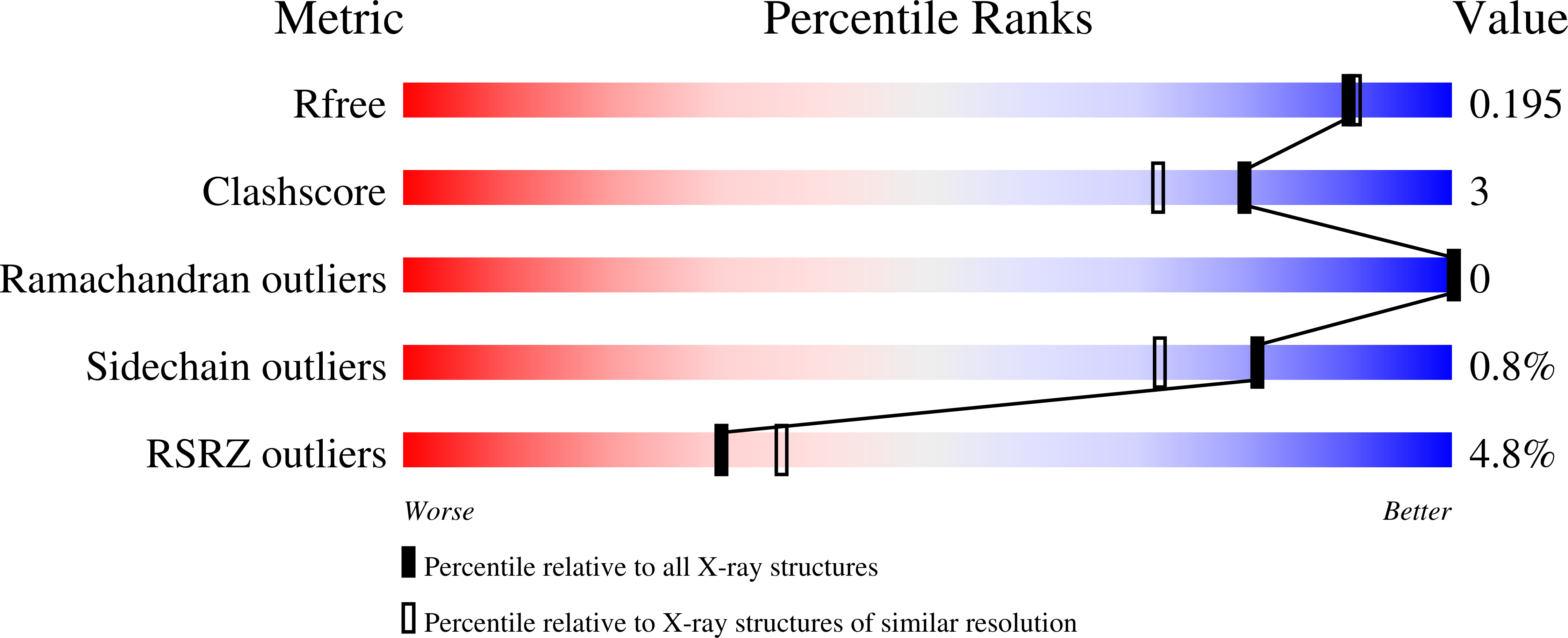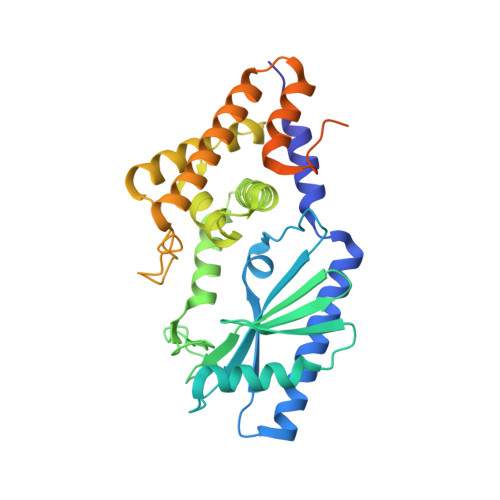Molecular basis of CD-NTase nucleotide selection in CBASS anti-phage defense.
Govande, A.A., Duncan-Lowey, B., Eaglesham, J.B., Whiteley, A.T., Kranzusch, P.J.(2021) Cell Rep 35: 109206-109206
- PubMed: 34077735
- DOI: https://doi.org/10.1016/j.celrep.2021.109206
- Primary Citation of Related Structures:
7LJL, 7LJM, 7LJN, 7LJO - PubMed Abstract:
cGAS/DncV-like nucleotidyltransferase (CD-NTase) enzymes are signaling proteins that initiate antiviral immunity in animal cells and cyclic-oligonucleotide-based anti-phage signaling system (CBASS) phage defense in bacteria. Upon phage recognition, bacterial CD-NTases catalyze synthesis of cyclic-oligonucleotide signals, which activate downstream effectors and execute cell death. How CD-NTases control nucleotide selection to specifically induce defense remains poorly defined. Here, we combine structural and nucleotide-analog interference-mapping approaches to identify molecular rules controlling CD-NTase specificity. Structures of the cyclic trinucleotide synthase Enterobacter cloacae CdnD reveal coordinating nucleotide interactions and a possible role for inverted nucleobase positioning during product synthesis. We demonstrate that correct nucleotide selection in the CD-NTase donor pocket results in the formation of a thermostable-protein-nucleotide complex, and we extend our analysis to establish specific patterns governing selectivity for each of the major bacterial CD-NTase clades A-H. Our results explain CD-NTase specificity and enable predictions of nucleotide second-messenger signals within diverse antiviral systems.
Organizational Affiliation:
Department of Microbiology, Harvard Medical School, Boston, MA 02115, USA; Department of Cancer Immunology and Virology, Dana-Farber Cancer Institute, Boston, MA 02115, USA.
















